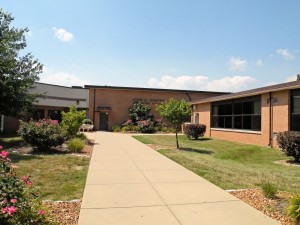The Collinsville Unit 10 school district will once again explore changes to school boundaries in an effort to cut costs and increase instruction time for students.
The School Board and district administrators worked with education logistics company Edulog Logistics LLC during the 2012-2013 school year to explore ways to reduce transportation costs. One of the two options considered called for converting Twin Echo Elementary into a pre-kindergarten and early childhood education center and making boundary changes. The other option called for making boundary changes and possibly changing school start times.
Public reaction to repurposing Twin Echo was overwhelmingly negative, causing the option to be quickly shelved. Action was delayed on adjusting boundaries.
A group was formed to further explore short-term solutions for boundary and school start time changes that could save the district money. The group provided a report to the School Board on Nov. 18 outlining preliminary findings and possible solutions.
Adjustments to school start times were explored for all school levels in the district. Savings to the district were not significant enough to justify the disruption that would have been caused by the start time changes, Superintendent Bob Green said.
The School Board recommended moving forward to explore boundary changes for the districts eight kindergarten through 4th grade elementary schools. The district also includes a special needs center, a 5th and 6th grade intermediate school, a junior high school and a high school.
Approximately $97,000 is spent each year transferring 397 students from home schools to serving schools. The process includes bussing children to their home school, where one of 30 transfer buses used daily transports them to their serving school.
Of the 397 transfer students, 237 do not attend their home school because there is no space available. The other students are transferred for school choice, special education or other circumstances.
Transfer students, the administration estimates, lose 30 minutes of instructional time per day, or 13 days per school year. The students arrive 15 minutes after the school day has begun for their classmates and are dismissed 15 minutes early to ensure smooth bus transitions.
The next steps in the boundary evaluation process will be to formulate proposed new boundaries and take the recommendations to the parents and the community, possibly with meetings at the schools. School Board President Gary Peccola said it is very important for the board and the administration to get public input, as well as explain why changes are needed. “I think when most people see the facts, they will be understanding,” Peccola said.
If the community wants to continue the neighborhood school concept, in place of education centers for grade levels, the district will have to figure out how to make it work, Green said. However, Green cautioned that change will not be easy.
“There are no sacred cows if we are considering boundary changes,” Green said. “We need to set emotion aside.”
Board member Gary Clark said many will be affected by a change, and not everyone will be pleased. “A lot of people will be unhappy with us and the district, but it’s a way we have to go,” Clark said.
Adjusting the boundaries for the growing district is seen as a short-term solution, Green said. Soon the community will have determine the future direction of their schools, which may include additions to existing buildings or new construction.
All eight elementary schools are at or near capacity. The developer of a new subdivision in Collinsville expects to begin building houses in the spring and a dormant subdivision in Caseyville is attempting a rebirth.
The new subdivisions have the potential to cause the district to be over capacity. “We need to get the community’s attention and focus to discuss what our district will look like in the future,” Green said.
Re-drawing the borders to reduce the number of transfers may not solve the problem beyond the coming academic year, Director of Student Services John Griffith said. The district has a mobility rate of 13 percent, according to the Illinois State Board of Education. The high turnover in schools could cause border changes to be obsolete soon after enactment.
Plans to bring proposed boundary changes to the public will need to happen quickly if they are to be enacted in the 2014-2015 academic year. If the changes are finalized by January, they can be implemented during the following school year, Green said.




